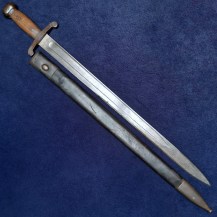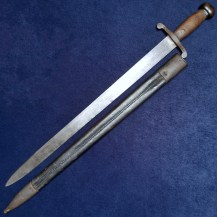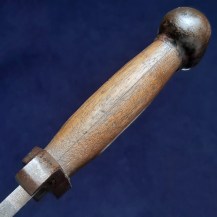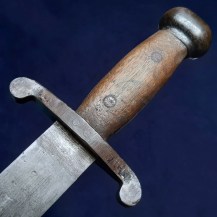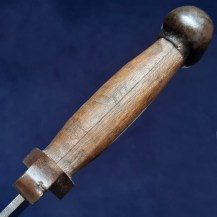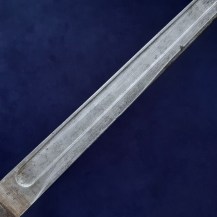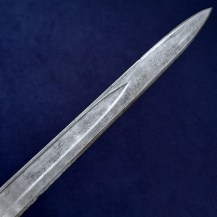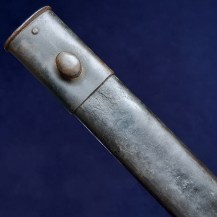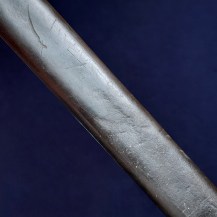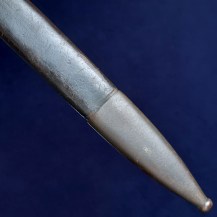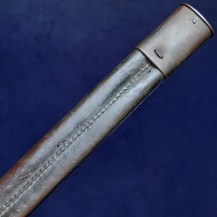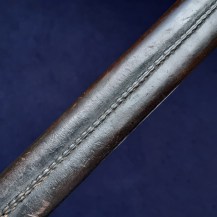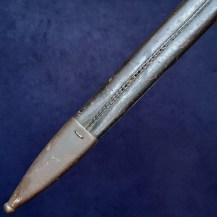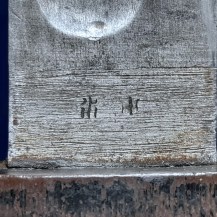Japanese Army Artilleryman’s Short Sword, Second Model, c1886
Straight spear pointed blade with fuller on one side only, the other side flat. Steel crossbar hilt with forward-curving quillons each side, two-piece wood slab grips secured by two steel rivets, steel oval ball pommel.
The blade is stamped at the ricasso with two Japanese characters.
In 1884 the Imperial Japanese Army directed that rifles were to be withdrawn from Japanese artillerymen and in future short swords were to be issued to them instead. A commission was to be set up to review existing European designs for such swords and produce a new design based upon them, with stocks of Enfield rifle bayonets issued temporarily while this was carried out. This was characteristic of the Meiji period in which Japan deliberately absorbed Western ideas on military organization and equipment, seeking to achieve parity in technology and tactics.
Multiple models of short sword emerged from this process – the version which was probably the first to be introduced (Kō) is referred to in sources as 砲兵刀 (Artillery Sword). It had a cast brass hilt and grip, and a black leather scabbard with brass throat and chape pieces, showing clear influence from the German faschinenmesser sidearms of the 19th century, particularly the M1852. The machine-made blade fullered only on one side is also very European, reminding me of the Vetterli bayonet, Saxon artillery sidearms or various Austrian models.
This is the second version (Otsu), probably introduced in 1886. It used the same blade but generally deviated from the German style, replacing the grip with wood and all other brass parts with steel. This would have been lighter and the simple steel ball pommel may have been intended to substitute for a hammer. Some sources suggest this type was initially introduced for the use of military police, referring to it as 憲兵刀 (MP Sword), but it does not appear to have been issued in this role and was probably also given to artillery in practice.
A third type (Hei) exists with a smooth, non-riveted wood grip and brass parts, called 徒歩刀 (literally ‘Walker sword’), introduced in 1890.
The various short swords were ultimately replaced in 1898 with the Type 30 Arisaka bayonet, this being substantial enough to do the same work and considerably simplifying supply.
Some light patination to the blade overall, with a few darker spots. The hilt and pommel were originally painted black and much of this is still present, with some wear exposing patinated steel. Some dents and light handling wear to the wood grip. The pommel can rotate slightly in place, although the grip is solid in the hand. The seam of the scabbard has opened slightly in one section towards the chape. The scabbard fittings are darkly patinated with some scratching.


